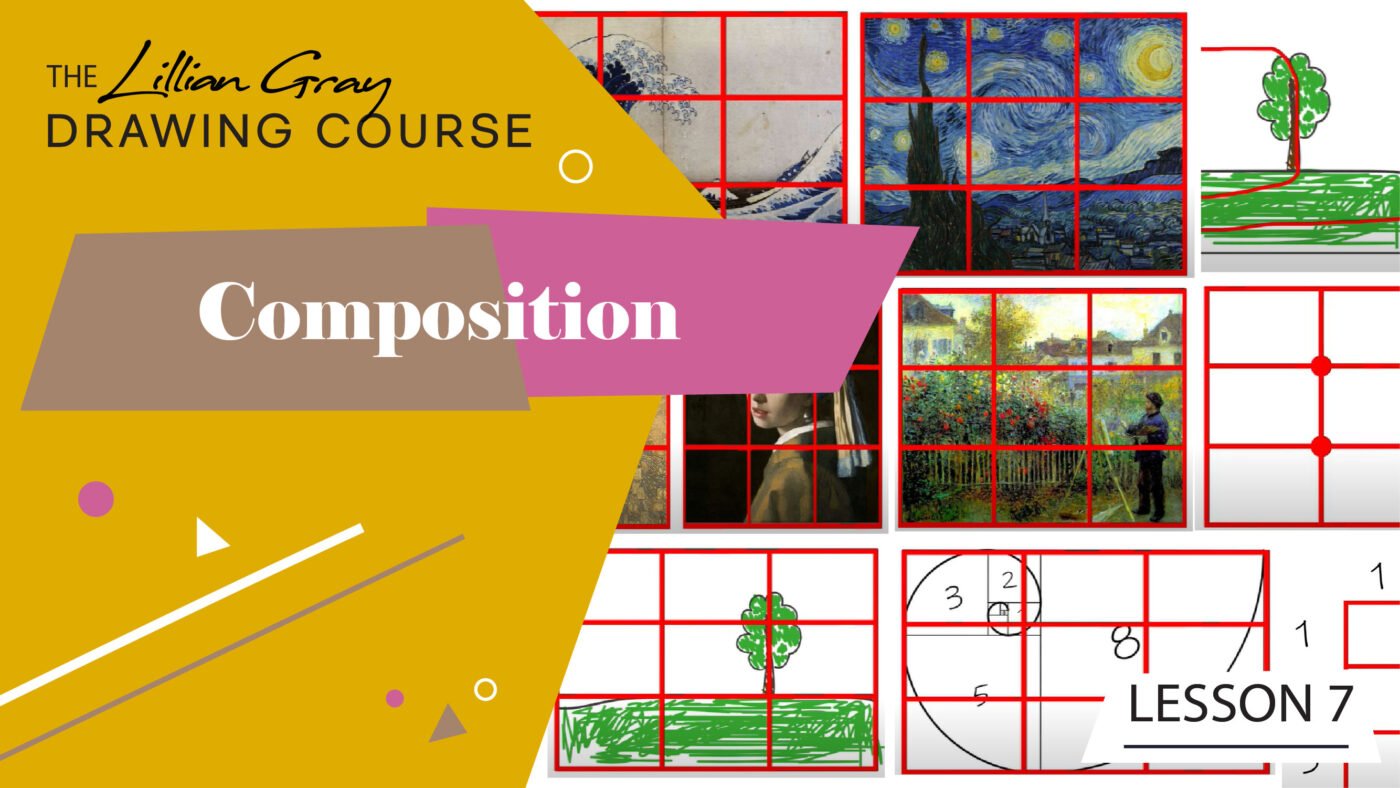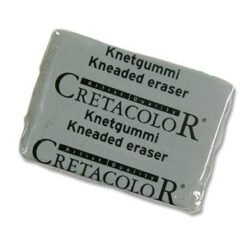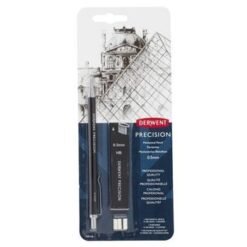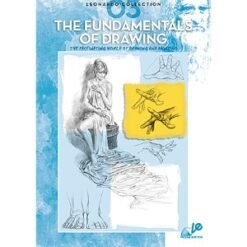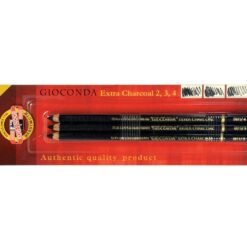No products in the basket.
Drawing Course by Lillian Gray
Lesson 7 – Composition
Watch this lesson for free on our YouTube channel
Watch the lesson for free on our YouTube channel
Free Drawing Course by artist Lillian Gray
This is a video and blog series teaching the fundamentals of drawing in an easy to understand way. The series consists of 15 lessons presented by artist Lillian Gray.
Hi everyone, I’m Lillian Gray, a South African fine artist and the co-owner of the Lillian Gray Fine Arts school. Today’s lesson is all about composition.
Composition as an emotive tool.
I want you to realize that composition is an extremely powerful tool. The way you frame something can evoke various emotions. We can draw the same mug or the same teacup but have a completely different message in the way we frame it. I want you to imagine we both have to draw a teacup. And this teacup used to be owned by your gran. If I draw the teacup from above or from an eye-level, quite a tight crop, I’m showing the intimacy that exists between my grandma and myself. How we used to connect and how drinking tea with her is a wonderful experience and memory of intimacy.
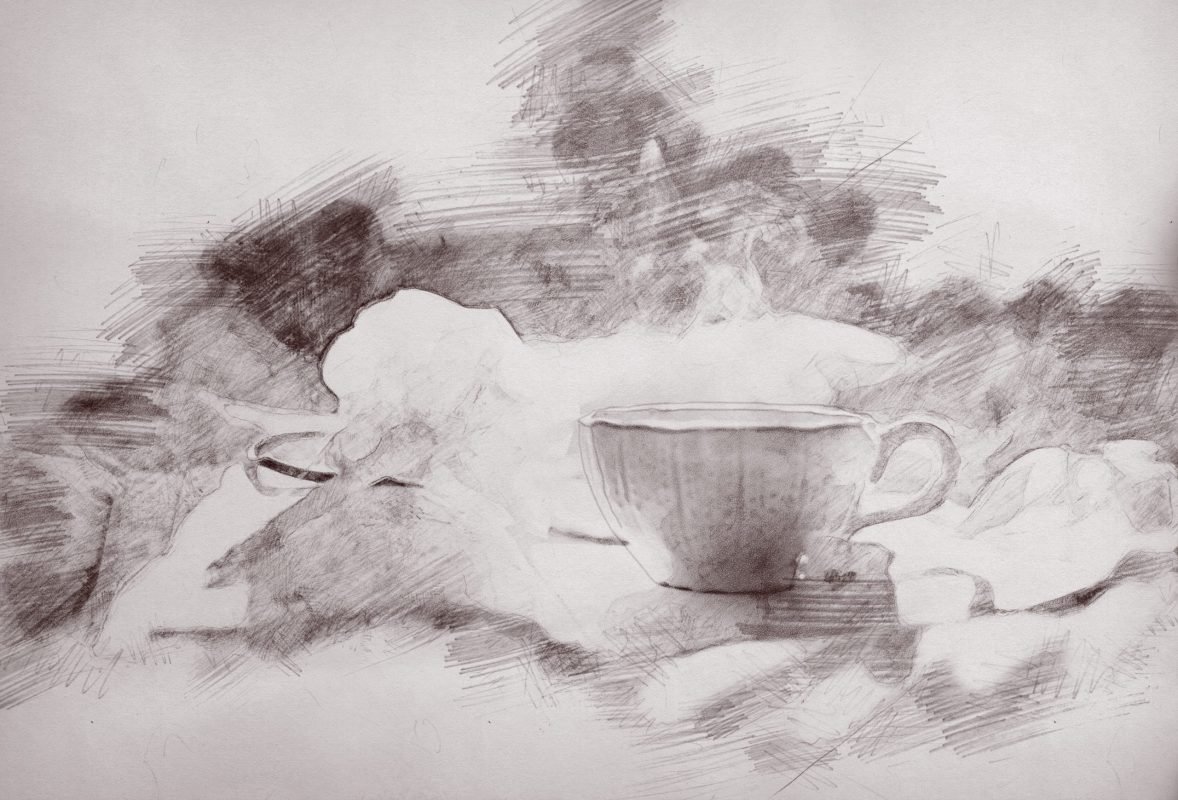
If, however, my grandmama was an evil woman that used to stick a needle in your thigh every time you didn’t have table manners. She did this under the tablecloth so nobody could see it. She used to hurt and abuse you, the drinking tea memory is very different and sordid. So the way we are going to compose that is very different. We might zoom out more, we might draw it from a distance called agonizing dread of stepping up to meet your grandma. So we are both drawing a teacup, but there’s a very different story. We’re unlocking various emotions by only changing the way we frame it.

Various Compositions
Okay, so remember our toolbox analogy, where you guys sometimes have pliers, screwdrivers, a hammer, tongs. Arrange whatever you need to get the job done. Just like that, there are lots of ways, many ways to skin a cat. Lots of different tools in composition and you need to know when you need to use which one. It’s very important that you guys understand and know the rules before you break the rules.
Rule of Thirds
One of the things is a set of beliefs that ancient Greeks developed, is the rule of thirds. So I’d like to explain to you guys the rule of thirds. In the rule of thirds, we have our picture planes and we divide it up into three sections, both ways. The whole idea of the rule of thirds is that our most important objects are placed on one of these intersection lines.
Our horizon line is placed on one of the horizontal lines or our main object of focus is placed on one of the vertical lines. I think the ancient Greeks developed this and we’re not sure how much of this they understood, but I want to just show you this in practice. When I ask a child to draw a tree, they would normally do this. They would draw a tree smack bang in the middle of the picture frame, placed quite low on the bottom. This makes your drawing look quite juvenile. It looks like a child drew this.
Without changing my drawing style, I am now going to just frame my tree in a different way, applying the rule of thirds. I haven’t changed the way that I’ve drawn the tree. All that I have done is I’ve changed the way I compose the tree. So how did I find the rule of thirds? I put my horizontal line on the third line going down, and I placed my object of importance on one of the other lines.
Now, why does this make such a difference? It is because of the journey of the eye. When I look at this child’s drawing, my eyes go down into the tree and then plonks out of the picture space. When I have drawn my tree using the rule of thirds, I have much more harmony and serenity, because my eye comes into the picture frame looks at the tree and exits.
So the journey of my mind is much longer and smoother than this big drop. A lot of research has been done into the rule of thirds and why it works. Some say that it uses the Fibonacci code, the ideal proportion of the world, and that’s why we feel so at peace when we use the rule of thirds and because it’s also kind of echoing design principles used in nature.

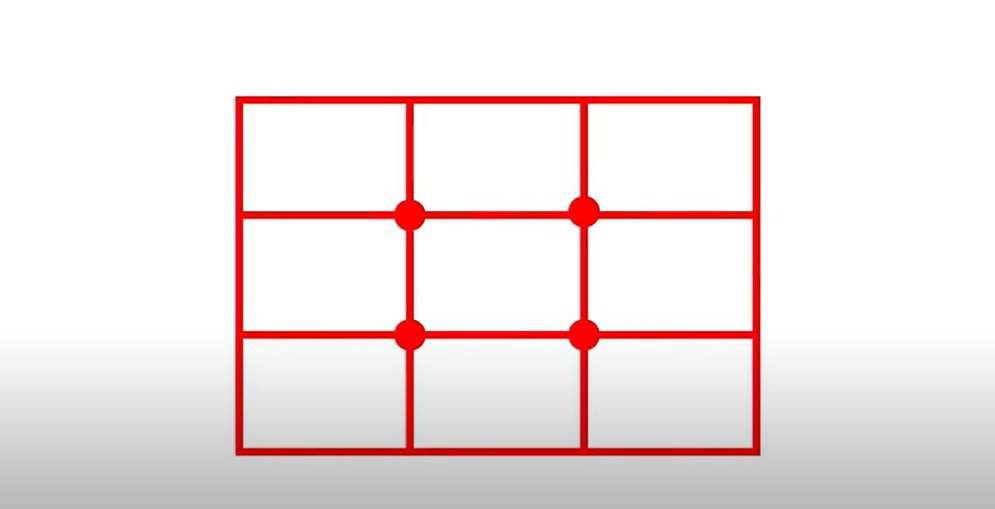
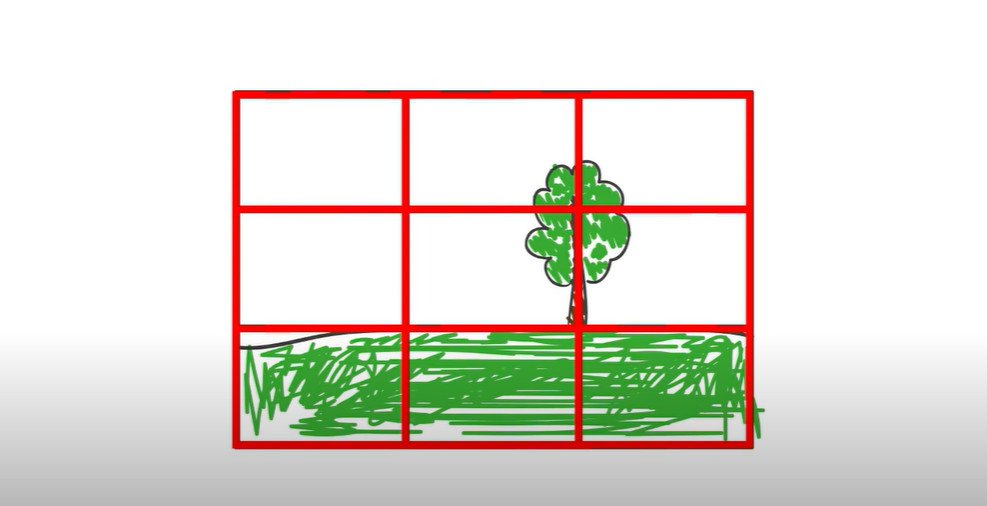

Other Compositions
Now we’re going to move away from the rule of thirds and look at other types of composition. The T-composition, the C curve, S-curve, L-composition, the U-composition and the diagonal composition. Let’s see if we can identify these in various photos?
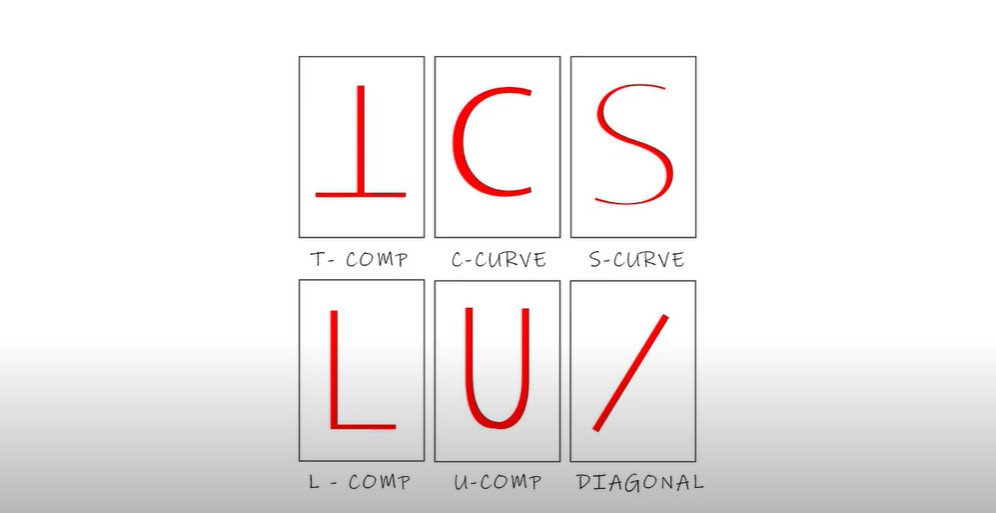
Composition Exercise 1: Draw small still lifes using T-Composition, C-Curve. S,-Curve, L-compositions,and U-composition.
For this exercise I want you guys to go and find various objects in your house, and I want you to pack them according to different compositions. Now we’re going to add some fun stuff. We’re going to look at a T-composition, diagonal composition, U-composition and try to pack your objects and draw from life to compose them in various ways.
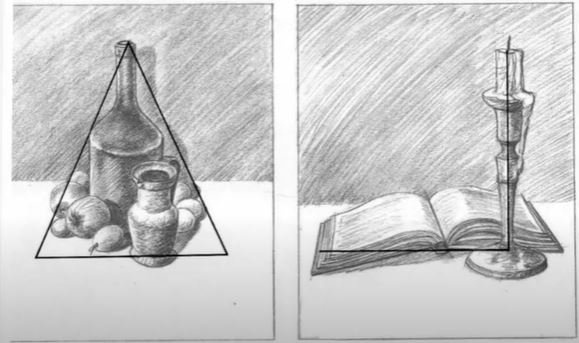

Composition in film
Another resource and place that you could really, really learn about composition is in filmmaking! Now things have gotten much more complicated. We’ve got a video camera and not just taking stills, but actually moving around, sweeping shots, up, down, low, high and we get various perspectives.

I want you to imagine that if you’ve got the beginning of a crime scene, where our hero arrives and this evil, evil, monster Godzilla is attacking a big, large building, we’re going to have a low perspective. We’re going to drop the camera and we’re going to film this beast from a low angle. This shows the vulnerability of our hero, the fact that he feels overwhelmed. It shows the immenseness of the task and how hectic it is to really face this enemy.
After they’ve done the whole battle and we swivel to the end, we switch to a high angle, an angle of victory, conquering the fact that he’s bigger than the situation. The fact that he has risen to the occasion and we’re showing how menial this task now is, and how superior his ability is. All of these things are conveyed by simply changing the angle.

Composition Exercise 2: Pause movies and note the camera angles and compositions.
And start looking at movies, pausing the TV! Why are you feeling certain things when you see a certain shot? How did they frame it? How are they conveying that emotion? When you guys now start a drawing or a painting, how would you compose it? What is the message? What is the emotion that you would like to convey? And then pick the correct tool out of your toolbox to convey that!
I hope you guys feel inspired! That’s our lesson on composition and I hope you guys really enjoy the exercises.
I’m Lillian Gray, a South African artist, and I hope you guys enjoyed this lesson. Please remember to subscribe and watch our next drawing lesson
Shop Drawing Supplies online with us
Our online store aims to remove all confusion when it comes to shopping for art supplies. We only stock what is really needed and don’t flood you with choices. To view drawing supplies:
 A3 Toned Paper Clay Pad 120gsm FabrianoR380.00
A3 Toned Paper Clay Pad 120gsm FabrianoR380.00 Faber-Castell Graphite Sketch SetR115.00
Faber-Castell Graphite Sketch SetR115.00 A3 Toned Paper Sand Pad 120gsm FabrianoR300.00
A3 Toned Paper Sand Pad 120gsm FabrianoR300.00 Cretacolor Kneadable EraserR25.00
Cretacolor Kneadable EraserR25.00 A4 Toned Paper Clay Pad 120gsm FabrianoR205.00
A4 Toned Paper Clay Pad 120gsm FabrianoR205.00 Mechanical Pencil HB 0.5MM – DerwentR136.00
Mechanical Pencil HB 0.5MM – DerwentR136.00 Drawing MangaR215.00
Drawing MangaR215.00 Fundamentals Of Drawing 3 – Leonardo CollectionR245.00
Fundamentals Of Drawing 3 – Leonardo CollectionR245.00 Black Charcoal Pencil 3pcs – Koh-i-NoorR89.00
Black Charcoal Pencil 3pcs – Koh-i-NoorR89.00 Set of Paper StumpsR52.00
Set of Paper StumpsR52.00

